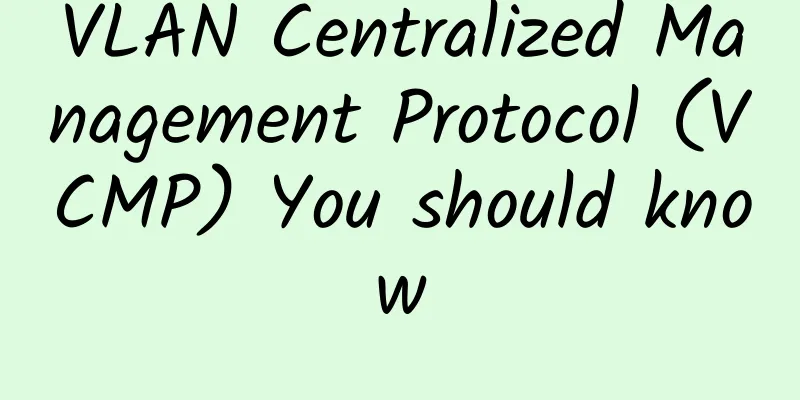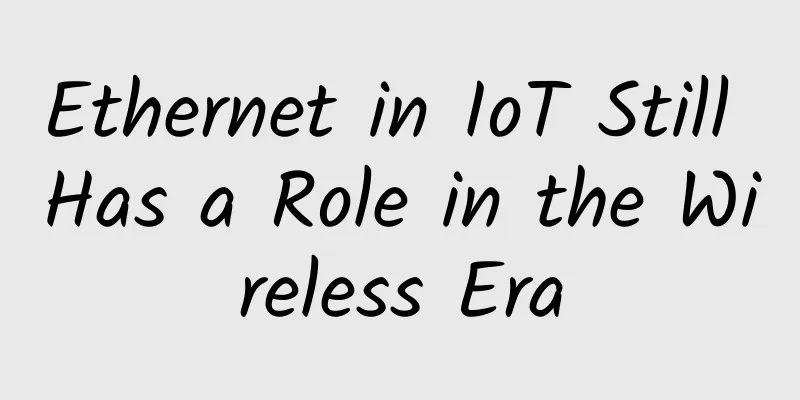VLAN Centralized Management Protocol (VCMP) You should know

|
In production environments, we often configure VLANs. However, as the number of devices increases, it is not only a large workload but also inefficient for each person to configure each device manually. Huawei devices provide us with a VLAN Central Management Protocol (VCMP), which is Huawei's private protocol. It is similar to Cisco's VTP. Today, let's take a look at Huawei's private protocol VCMP. definition VLAN Central Management Protocol (VCMP) can realize centralized maintenance and management of VLANs. VCMP is a Huawei proprietary protocol that works at the link layer and provides a way to propagate VLAN configuration information in a Layer 2 network, thereby ensuring that VLAN configuration information is consistent throughout the Layer 2 network. Compared with manual configuration, VCMP has the advantages of less maintenance workload and consistent VLAN configuration. Basic Concepts VCMP uses a domain to manage switches. This domain is called a VCMP management domain. It also uses role definitions to determine device attributes, which are called VCMP roles. VCMP defines four roles: Server, Client, Transparent, and Silent. VCMP management domain A VCMP management domain consists of a group of switches with the same domain name interconnected through Trunk or Hybrid link interfaces. Each switch in the same domain must use the same domain name, and a switch can only join one VCMP management domain. Switches in different domains cannot synchronize VLAN information. The VCMP management domain determines the scope of VCMP management devices. All switches added to the domain will be managed by the management device in the domain. There can be only one management device in a domain, but there can be multiple managed devices. The role of VCMP 1. Server As a management role of the VCMP management domain, it is responsible for synchronizing VLAN information to other devices in the same domain through VCMP messages. The information about creating or deleting VLANs and modifying VLAN names and descriptions on the server will be propagated throughout the domain. 2. Client As a managed role in a VCMP management domain, it belongs to a specific VCMP management domain and synchronizes VLAN information to the local device based on VCMP messages sent by the server. The information about creating or deleting VLANs and modifying VLAN names and descriptions on the client will not be propagated within the domain, but will be overwritten by the VLAN information sent by the server. 3. Transparent As a transparent transmission role, it is not affected by VCMP management behavior and does not affect other devices in the VCMP management domain. Transparent directly forwards VCMP messages (only to Trunk or Hybrid links). The creation and deletion of VLANs and the modification of VLAN names and descriptions on the Transparent are not affected by the Server and will not be propagated within the domain. This can meet the needs of some devices that do not want to be managed by VCMP but need to forward VCMP messages. 4. Silent Deployed at the edge of a VCMP management domain, it is not affected by VCMP management behaviors and does not affect other devices in the VCMP management domain. It can be used to isolate the VCMP management domain. After receiving a VCMP message, Silent directly discards it instead of forwarding it. The creation and deletion of VLANs and the modification of VLAN names and descriptions on Silent are not affected by the Server and will not be propagated within the domain. Configuration Examples The branch network of an enterprise is a Layer 2 network, with SW1 as its aggregation switch and SW2~SW3 as access switches, of which SW2 is used to access external visitors. As the scale of enterprise branches grows, network administrators need to configure and maintain a large amount of VLAN information on each switch, which is a lot of work and prone to errors. Therefore, the administrator hopes to reduce the workload of VLAN configuration and maintenance, but the permissions for external visitors to access the branch network need to be restricted, and the administrator hopes that the VLAN on SW2 can be independently configured and maintained. Configuration Roadmap VCMP can be deployed in this enterprise branch network, and the aggregation switch AGG can be set as the server, and the access switches ACC2~ACC3 can be set as the client. In order to prevent ACC1 from being managed by VCMP, it can be set as Silent. In this way, you only need to modify the VLAN information on AGG, and the information will be automatically sent to ACC1~ACC3 in the enterprise branch network. ACC2~ACC3 will automatically synchronize the VLAN information on AGG, and ACC1 will not be affected by VCMP, thus reducing the workload of modifying the same VLAN information on multiple switches and ensuring the VLAN independence of ACC1. At the same time, to avoid the trouble of manually setting the link type, configure automatic negotiation of the link type through LNP. The configuration roadmap is as follows:
Procedure 1. Configure automatic negotiation of link type through LNP. Enable the link type auto-negotiation function on the interface. The configuration of ACC1, ACC2, and ACC3 is similar to that of AGG and is not mentioned here.
2. Specify the role of each device # Configure the AGG role as Server.
# Configure the role of ACC1 as silent.
# Configure the role of ACC2 as Client.
# Configure the role of ACC3 as Client.
3. Configuring VCMP parameters on the server and client # Configure the VCMP management domain, device ID, and authentication password on the AGG.
# Configure the VCMP management domain and authentication password on ACC2.
# Configure the VCMP management domain and authentication password on ACC3.
4. Enabling VCMP By default, VCMP is enabled on the interface and does not need to be enabled again. However, to prevent VCMP packets from affecting PC terminals, you can disable VCMP on the interface that connects the client to the PC terminal.
5. Verifying the configuration After the above configuration is complete, run the display vcmp status command to view VCMP configuration information, including the VCMP management domain name, device role, device ID, configuration serial number, and domain password. Take AGG display as an example:
Run the vlanvlan-id command on AGG to create VLAN 10. Run the display vlansummary command on ACC1 to ACC3 respectively, and you can see that ACC2 and ACC3 have synchronized the VLAN information on AGG, but ACC1 has not synchronized the VLAN information on AGG.
View on ACC1
View on ACC2
View on ACC3
|
<<: IPv6 communication principle (1) - The network card startup process that cannot be ignored
Recommend
RackNerd: $14.89/year KVM-1GB/20GB/3TB/Los Angeles MC Data Center
RackNerd is a foreign VPS hosting company founded...
China Mobile releases February operating data: 5G customer number reaches 168,971
China Mobile announced its operating data for Feb...
WOT Li Jian: The evolution of the eleme container platform
[51CTO.com original article] The Global Software ...
Which bare metal cloud service provider is the best? Huawei Cloud is happy
[51CTO.com original article] A few years ago, whe...
LOCVPS Double 11 Top up 300 get 50, all VPS 20% off
LOCVPS (Global Cloud) has announced the Double 11...
From the SPACE matrix, is 5G on the road to success?
In September 1830, the world's first intercit...
This article will help you understand the technical principles of CDN!
Hello everyone, I am Brother Shu! I believe every...
Tencent interview: On a 32-bit 4GB system, accessing 2GB of data, what will happen to the virtual memory?
Hello everyone, I am Xiaolin. Today a reader sent...
Electronic Port "shines the border" - see the operation and maintenance of the Urumqi branch of China Electronic Port Data Center "New Silk Road"
【51CTO.com article】 As the infrastructure of elec...
20 lines of Python code to achieve encrypted communication
1. Introduction The Internet is full of eavesdrop...
A look back at five major outages in 2019
Any time a network service outage occurs, it can ...
5G is more complex than you think
In the future, 5G networks are developing in the ...
Let’s talk about 6G development
As of now, the fifth generation (5G) mobile commu...
DiyVM: Japan/USA/Hong Kong CN2 VPS starting from 50 yuan per month, dual core/2G memory/50G SSD/5~200M bandwidth
Regular sharing, how about DiyVM? DiyVM is a Chin...
AlphaVPS: €19.99/year - dual core, 2G memory, 15G SSD hard drive, 1TB monthly traffic, 5 data centers available
AlphaVPS has been shared several times in the blo...









